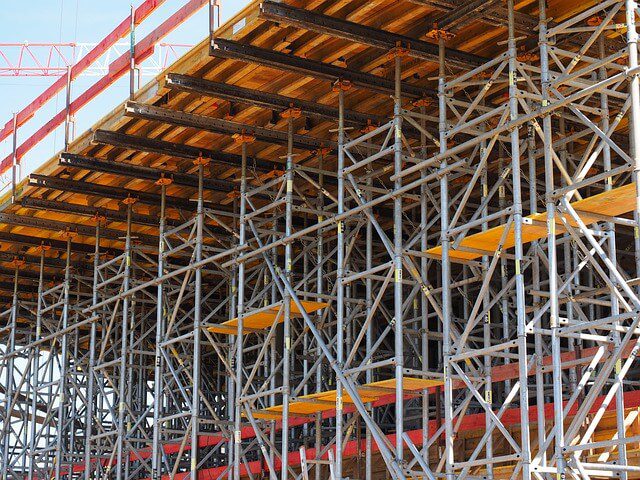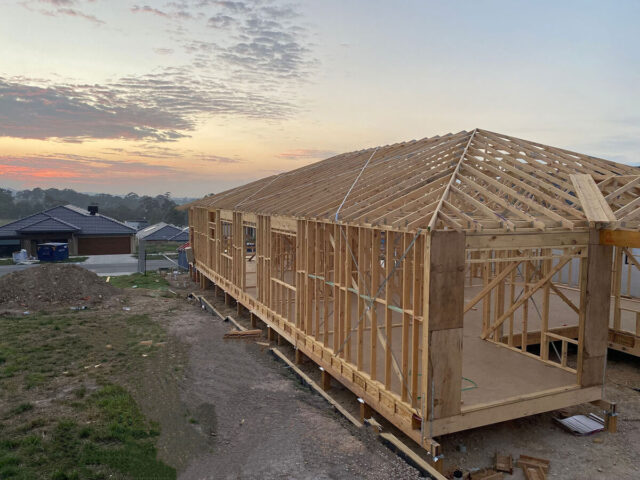
In recent years, the construction industry has witnessed a profound transformation as environmental concerns continue to gain traction worldwide. The global demand for sustainable, eco-friendly construction practices has surged, driven by the need to reduce carbon footprints, conserve resources, and promote a healthier environment. From energy-efficient buildings to the use of recycled materials, eco-friendly construction is no longer just a trend—it’s becoming a fundamental part of the industry’s future.
What is Eco-Friendly Construction?
Eco-friendly construction, also referred to as green building or sustainable construction, involves the design, construction, and operation of buildings with a focus on minimizing their environmental impact. The goal is to reduce the consumption of natural resources, decrease energy use, and ensure that structures are in harmony with their surroundings. This can be achieved by employing innovative materials, construction methods, and technologies that help conserve energy, reduce waste, and enhance the overall quality of life for building occupants.
Eco-friendly construction encompasses various strategies, including energy efficiency, water conservation, sustainable material use, and waste reduction. The ultimate aim is to create buildings that are not only functional and aesthetically pleasing but also contribute positively to the environment.
The Environmental Impact of Traditional Construction
The traditional construction industry has long been criticized for its detrimental environmental impact. The construction process itself consumes vast amounts of energy, produces a significant amount of waste, and generates high levels of carbon emissions. In fact, the building sector is one of the largest contributors to global greenhouse gas emissions, accounting for around 40% of the world’s energy-related CO2 emissions.
In addition to carbon emissions, construction projects often result in the depletion of natural resources. Traditional construction materials, such as concrete, steel, and wood, require significant energy and raw materials to produce, leading to the depletion of finite resources. Furthermore, many of these materials are not recyclable, resulting in enormous amounts of waste being sent to landfills.
To mitigate these environmental challenges, the industry is increasingly turning to sustainable alternatives that reduce energy consumption, recycle waste, and minimize the carbon footprint of buildings.
Key Drivers Behind the Rise of Eco-Friendly Construction
Several factors have contributed to the rapid rise of eco-friendly construction practices. Let’s explore some of the key drivers behind this transformative shift in the industry. One of the significant drivers is the increasing availability of tools and resources that allow architects, builders, and even consumers to access information about sustainable building practices and materials. With easy access to data on energy efficiency, sustainable materials, and environmental impact, decision-makers are more informed and empowered to make green choices during the construction process.
1. Growing Environmental Awareness
The growing awareness of climate change and environmental degradation has been a key factor driving the shift toward more sustainable construction practices. As the impact of human activity on the planet becomes increasingly evident, there is a heightened sense of urgency to adopt more responsible ways of living and working. This has translated into a demand for green buildings that use less energy, produce fewer emissions, and have a smaller ecological footprint.
2. Government Regulations and Incentives
Governments around the world are implementing stricter environmental regulations to reduce the environmental impact of construction. These regulations often require builders to adhere to energy efficiency standards, use sustainable materials, and adopt practices that minimize waste. In some cases, governments offer tax incentives, grants, or subsidies to encourage the adoption of eco-friendly construction practices.
For example, in the United States, the Green Building Certification Institute (GBCI) oversees the Leadership in Energy and Environmental Design (LEED) certification program, which recognizes buildings that meet high standards of sustainability. LEED certification has become a sought-after mark of excellence in eco-friendly construction, providing an incentive for builders to incorporate green practices into their projects.
3. Economic Benefits
In addition to environmental advantages, eco-friendly construction also offers significant economic benefits. Although green buildings may have higher upfront costs due to the use of sustainable materials and advanced technologies, they typically result in long-term savings. Energy-efficient buildings, for instance, can drastically reduce operating costs by lowering energy consumption. Moreover, sustainable construction practices often lead to lower maintenance costs and longer-lasting structures, providing excellent value for both property owners and tenants.
4. Technological Advancements
Advancements in construction technology have played a crucial role in the rise of eco-friendly building practices. Innovations in materials, construction techniques, and energy-efficient technologies have made it easier and more affordable to construct sustainable buildings. For example, the development of solar panels, energy-efficient HVAC systems, and high-performance insulation materials have enabled buildings to consume less energy while providing greater comfort.
Moreover, the rise of smart building technologies has allowed for the automation of energy management systems. This technology can optimize energy consumption by adjusting lighting, heating, and cooling systems based on occupancy or time of day, further enhancing a building’s energy efficiency.
5. The Desire for Healthier Living Spaces
As awareness of the importance of health and well-being grows, more people are seeking homes and office spaces that provide a healthier environment. Eco-friendly construction practices contribute to better indoor air quality, more natural light, and improved ventilation, which all have a direct impact on occupants’ health. Additionally, sustainable materials are less likely to emit harmful chemicals, such as volatile organic compounds (VOCs), which can negatively affect indoor air quality.
By prioritizing these elements, eco-friendly construction helps create spaces that foster physical and mental well-being, attracting tenants who prioritize health-conscious living.

Strategies for Eco-Friendly Construction
There are several effective strategies that builders can employ to make construction projects more sustainable. Let’s take a closer look at some of the most common techniques.
1. Energy Efficiency
Energy-efficient buildings are at the core of eco-friendly construction. This includes the use of energy-saving technologies, such as LED lighting, energy-efficient windows, and advanced insulation materials, all of which reduce the need for heating and cooling. Additionally, passive design principles, which take advantage of natural sunlight and ventilation, help lower energy consumption while enhancing comfort.
2. Sustainable Materials
The use of sustainable building materials is another key aspect of eco-friendly construction. These materials are sourced from renewable or recycled resources and have minimal environmental impact during their lifecycle. Examples of sustainable materials include bamboo, reclaimed wood, recycled steel, and low-impact concrete. By incorporating these materials into construction projects, builders can significantly reduce the depletion of natural resources.
3. Water Conservation
Water conservation is an essential element of sustainable construction, especially in regions facing water scarcity. Builders can incorporate water-efficient fixtures, such as low-flow toilets and faucets, as well as rainwater harvesting systems that capture and store rainwater for non-potable uses, such as irrigation and flushing toilets. These practices help reduce water consumption and minimize the strain on local water supplies.
4. Waste Reduction
The construction industry is notorious for generating large amounts of waste. However, eco-friendly construction focuses on reducing waste through recycling, reusing materials, and using prefabricated components. Additionally, construction waste management plans can ensure that materials like wood, metal, and concrete are recycled rather than sent to landfills.
The Future of Eco-Friendly Construction
The rise of eco-friendly construction practices is just the beginning. As the demand for sustainable buildings continues to grow, new innovations and practices are likely to emerge. From the use of alternative building materials, such as 3D-printed concrete and hempcrete, to the development of fully self-sustaining buildings, the future of eco-friendly construction holds exciting possibilities.
Moreover, the integration of artificial intelligence (AI) and machine learning into construction processes could lead to even greater efficiencies, allowing for smarter building designs and more accurate energy usage predictions. As the industry continues to evolve, eco-friendly construction practices will undoubtedly become more widespread, helping to create a more sustainable and resilient built environment for future generations.
Conclusion
Eco-friendly construction practices are reshaping the way we build, live, and work. As environmental concerns continue to take center stage, the construction industry is embracing new technologies, sustainable materials, and innovative designs to reduce its environmental impact. With growing awareness, supportive policies, and economic incentives, the rise of green buildings is not just a passing trend—it’s a crucial step toward a more sustainable future. By investing in eco-friendly construction, we can ensure that the buildings of tomorrow are not only functional and beautiful but also environmentally responsible.
